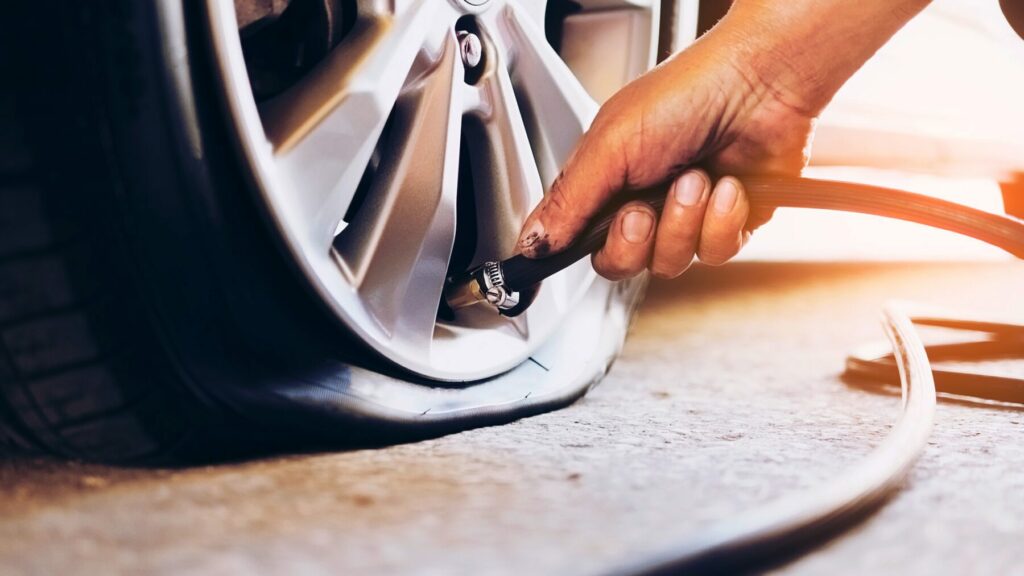The tires of your automobile serve multifarious roles, crucial to its safety and performance. They facilitate deft navigation through curves and halts while bearing the full brunt of your vehicle’s weight. Therefore, it becomes imperative to accord special attention to these indispensable constituents.
Thankfully, one of the simplest yet highly efficacious ways to extend care to your car tires is by maintaining the optimal tire pressure yourself. Explore this informative manual to acquaint yourself with the art of checking tire pressure and inflating your tires unassisted.
The Significance of Tire Pressure
Underinflated tires not only diminish fuel efficiency but also pose a perilous threat, potentially culminating in accidents, compromised steering control, vehicle component wear and tear, and more. Should you detect a decrease in your tire’s air pressure levels, it is prudent to prioritize timely reinflation.
How to Check Tire Pressure
Scrutinizing the tire pressure of your vehicle is a relatively straightforward endeavor. Initiate the process by procuring a tire gauge. These gauges come in various iterations, with digital and basic options among them, and are readily available for a reasonable cost, typically under $40. Additionally, maintaining a personal tire gauge proves invaluable, as the accuracy of gas station air hose gauges may not always be reliable. Many modern automobiles display tire pressure information for each tire directly on the dashboard. With your tire gauge in hand, the next step entails identifying the ideal pressure for your specific vehicle.
Determine the recommended inflation level by either consulting the sticker located within the driver’s side door jamb or referring to your car owner’s manual. This specification pertains to tire pressure under cold conditions, i.e., when the tires have not been in use for several hours.
Remove the valve stem cap from the tire; some vehicles sport green valve stem caps adorned with an “N,” indicating the presence of nitrogen instead of air. It is noteworthy that regardless of whether your tires are nitrogen-filled or not (air, primarily composed of nitrogen, can be utilized), the inflation pressure requirements remain unchanged.
Attach your air pressure gauge firmly to the tire’s valve stem and record the reading.
Should the pressure reading seem implausible, detach the gauge and attempt a second measurement, ensuring secure attachment to the valve stem.
Evaluating tire inflation solely by visual inspection often proves inconclusive. Therefore, it is advisable to employ a gauge to assess PSI levels at monthly intervals and following drastic temperature fluctuations. Additionally, remember to assess tire pressure when the tires have had time to cool, as tire pressure increases during operation due to air expansion.
How to inflate your tires step by step
Inflating your tires may appear daunting, but it is, in fact, a straightforward procedure that plays a pivotal role in accident prevention. Did you know that a tire operating at 25% below its recommended pressure stands three times more likely to be involved in an accident, while a tire overinflated by 25% is twice as likely to face such an outcome as a properly inflated tire?
When you observe your tires appearing underinflated, invest the time and effort to rectify the situation. Keep in mind that weather conditions can influence tire pressure, so exercise added caution in the event of temperature fluctuations, whether sudden drops or spikes. Here is a concise guide to assist you through the process:
1. Acquire a tire pressure gauge
To commence the task, you will require a tire pressure gauge, with some portable tire pressure fillers incorporating a built-in gauge. You may opt for the traditional analog gauge resembling a thermometer or opt for the modern electronic variant, providing instantaneous readings.
2. Ensure the tires are at a low temperature
It is crucial to perform tire inflation when the tires are cold. Therefore, it is advisable to undertake this task either before embarking on a journey or between trips. You can either visit a nearby gas station and park alongside an air dispenser or, for added convenience, equip yourself with a portable tire pressure filler. These devices are cost-effective and can be connected to your vehicle’s cigarette lighter.
3. Ascertain the recommended tire pressure for each tire
Identify the prescribed pressure level for each tire. Sometimes, this information can be found on the tire itself, within the driver’s manual located in the glove compartment, or even inside the gas tank door. Occasionally, it may also be posted on the door. Keep in mind that the recommended pressure differs for front and rear tires, typically measured in PSI (pounds per square inch).
4. Remove the valve stem caps.
5. Grasp the nozzle of the air dispenser and adjust the tires to the specified pressure level.
Exercise caution not to overinflate, as this constitutes a primary cause of road accidents.
6. Reassess the tire pressure for each tire to ensure accurate adjustment.
Reattach the valve stem caps, completing the task successfully.
Wrapu Up
Wasn’t that a straightforward procedure?
Always bear in mind that when inflating tires, it is imperative to avoid standing directly in front of the tire (position yourself to the side). Ensure that your hands, head, and other body parts remain clear of the tire, as there have been instances of tires dislodging from the rim during inflation, leading to severe injuries.
Inflation of tires is a simple and secure process, provided it is executed with due care and precision.
